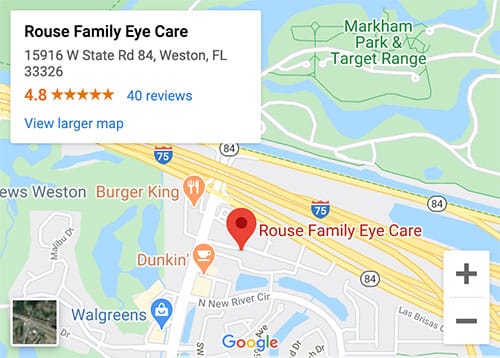Glaucoma is a group of eye conditions associated with high pressure inside the eye, which can damage the nerve connecting the eye to the brain. This serious eye condition can cause slow vision loss – it can even lead to blindness. In fact, glaucoma is the primary cause of blindness in people over the age of 60, according to the American Academy of Ophthalmology.
Eye doctors often call glaucoma the “silent thief of sight” because, in many cases, people with glaucoma do not experience symptoms of glaucoma in its early stages. Left undetected and untreated, glaucoma can lead to blindness. Fortunately, early detection and treatment can prevent further vision loss.
Light – and the visual information it carries about the outside world – enters the eye through the pupil, which sits in the middle of the colored part of the eye, known as the iris. Next, the lens of the eye focuses the light on the retina, which is the tissue lining the back of the eye. Nerve fibers in the retina transmit the visual information to the brain through the optic nerve.
Clear fluid, known as intraocular fluid or aqueous humor, fills the front part of the eye. This fluid nourishes the eye. The pressure the fluid creates, known as intraocular pressure (IOP), keeps the eye properly inflated. In a healthy eye, an intricate drainage system keeps the intraocular pressure at a normal level. Fluid flows out through a drainage angle at the edge of the iris and into the eye’s drainage system, where the bloodstream absorbs the fluid and carries it away.
Causes of Glaucoma
Most cases of glaucoma are the result of poor drainage. Clogs can develop in the eye’s drainage system, which prevents the intraocular fluid from draining from the eye. Excess fluid causes the intraocular pressure to rise inside the eye, and high IOP can press against the optic nerve to cause vision loss. Left untreated, the high pressure can even cause permanent damage to the nerve and blindness.
Certain factors can increase the risk of glaucoma. These risk factors include:
- Being over the age of 40
- Family history of glaucoma
- African, Hispanic, or Asian heritage
- High eye pressure
- Farsightedness or nearsightedness
- History of an eye injury
- Long-term use of steroid medications
- Thinning of the optic nerve or cornea, which is the clear outer surface of the eye
- Health conditions, such as diabetes, migraines, high blood pressure, poor blood circulation
Types of Glaucoma
There are two main types of glaucoma: primary open-angle glaucoma and angle-closure glaucoma. Glaucoma symptoms depend on the type of glaucoma.
Primary open-angle glaucoma is the most common type. It occurs when the eye does not drain fluid as well as it should. This type of glaucoma is painless and, in its early stages, causes no symptoms.
Angle-closure glaucoma can develop when the drainage angle sits too close to the iris, which allows the iris to block the drainage angle somewhat like a piece of paper sliding over a sink drain. Partial blockage of the drainage angle allows pressure build slowly; complete blockage causes IOP to rise sharply in an acute attack, which requires immediate care from an eye doctor to prevent blindness.
Symptoms of an acute attack of angle-closure include:
- Blurry vision that comes on suddenly
- Severe eye pain
- Headache
- Nausea and/or vomiting
- Seeing rainbow-colored rings or halos around lights
Glaucoma Treatment
Treatment cannot cure glaucoma, but it can slow the progression of the disease. Diagnosis and treatment of glaucoma begins with a comprehensive eye exam, in which the eye doctor will review the patient’s personal and family health history and examine the eyes. Eye examination includes measuring visual acuity to detect vision loss, tonometry to measure pressure inside the eye, pachymetry to measure corneal thickness, visual field testing to measure peripheral vision, and evaluation of the retina.
Treatment depends largely on the type of glaucoma and the level of vision loss. Medications can reduce pressure inside the eye by reducing production of intraocular fluid. In glaucoma surgery, eye doctors can create drainage flaps in the eye, insert a drainage valve, or destroy the tissue that makes intraocular fluid.
For more information about glaucoma, its diagnosis and treatment, contact Rouse Family Eye Care.

954-384-6200
